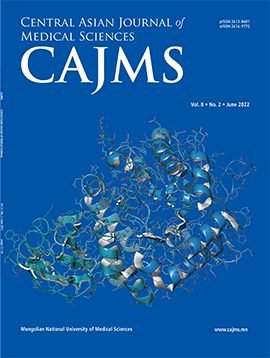Post-Cesarean Sepsis Causes and Biomarkers
DOI:
https://doi.org/10.24079/cajms.2022.12.005Keywords:
Bloodstream Infection, Pyemia, Septicemia, Severe Sepsis, Bacteremia, Cesarean Section, DeliveryAbstract
Objective: The determination of procalcitonin and lactate levels in the early diagnosis of sepsis is clinically significant and the higher the lactate level increases the greater the risk of mortality. In order to improve prevention and treatment of post-caesarean sepsis, in the present study we aimed to determine the serum biomarkers of Mongolian patients undergoing a cesarean section. Methods: Procalcitonin was determined by “E - 411” which is a fully automated analyzer and also by enzyme binding assay. Lactate, C-reactive protein, and lactate dehydrogenase was determined by “E - 411 only. Statistical analysis was performed by a SPSS - 20 software program, and statistics process by the chi-square test, Fisher test, and t-test. The confirmation rate was 95 % p < 0.05. Results: Women who gave childbirth in 2016 - 2020 and women who developed sepsis and who did not develop sepsis following C-section in the Clinical Maternity Hospital No.1 and in the Maternal and Child Health National Center were compared and studied. A total of 361 mothers were involved in the study. Conclusions: E. coli 29,4 %, intestinal bacteria 9,1 %, Staphylococcus epidermidis 8,9 %, Staphylococcus aureus 7,2 %, gram-negative bacteria 6,6 %, Streptococcus 5,3 %, gram-positive bacteria 2,8 %, Candida albicans 1,4 %, and Mycoplasma 1,1 % were responsible for bacteremia. Infection was caused by one bacterium in 141 cases (39,1 %), by two germs in 56 cases (15,5 %), by three microbes in 2 cases (0,6 %), and without any detection of bacteria in 162 cases (44,9 %).
Downloads
353
Downloads
Published
How to Cite
Issue
Section
License
Copyright (c) 2022 Mongolian National University of Medical Sciences

This work is licensed under a Creative Commons Attribution-NonCommercial 4.0 International License.




